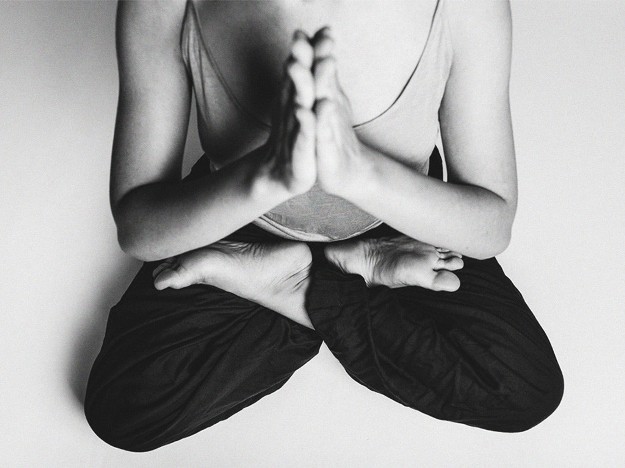
A student asked the yoga teacher, “But all we’re doing is trying to do what those old guys worked out in a cave 3,000 years ago, right?”
As always, the answer depends entirely on what you think she meant.
I think she meant that “they” worked it all out, and when we faithfully reproduce their asana practice, pranayama, mindfulness and meditation practice, then we’ll learn what they worked out. If that’s what she meant, my answer is a most emphatic “no.”
I could say “yes,” though, if we tweak the question slightly, if what she meant was more like: “But all we’re trying to do is what those guys in the cave 3,000 years were doing, which is trying to work it out, right?”
Many yoga practitioners seem to lean toward following the authority of an authentic yoga lineage—trying to reproduce poses and practices exactly the way that their gurus teach them. This is what is invoked whenever someone cites the authenticity or continuity of their lineage.
There are solid roots to this approach to yoga. It’s deeply enshrined in the tradition of the guru-student relationship. The student is expected to submit fully to his/her guru. The ancient texts refer quite disdainfully to students who shop around from teacher to teacher as “crows gathered at a sacred site.” (1)
There’s nothing surprising about this, either—yoga is the product of an authoritarian culture; it comes from a tradition in which the young are expected to submit to their elders, women to their fathers or husbands, and everyone must submit to the kings and princes.
But we do not live in such a world. Nor do I want to.
I especially don’t want to live in a world in which people are blindly obedient to priests, sages, popes or even gurus (much less kings and politicians). As Archibald McLeish put it:
“Religion is at its best when it makes us ask hard questions of ourselves. It is at its worst when it deludes us into thinking that we have all the answers for everyone else.”
Religion is almost as bad when it has convinced us that someone else knows all the answers.
In fact, we probably don’t really need it to “make us” ask hard questions of ourselves. We’re going to do that anyway. At least, we will as long as no one deludes us into thinking that they already know the answers.
What we need from our leaders and teachers is guidance and support as we seek to work out some answers for ourselves.
What we need is less authority and more autonomy.
The emergence of autonomy as a broad-based cultural value is one of the defining characteristics of the modern world. The word autonomy originates in ancient Greek. It’s a compound word bringing together auto, meaning: self, and nomos, meaning: norms, rules, laws. So in a sense it means we make our own rules, or live by the laws that we have made. (2) It means we are self-governing.
This is quite different to self-regulating, or self-powering—two different ways in which the word is sometimes used. It occasionally gets mixed up with automaton, which is much more like a robot than a modern human being. The robots in Terminator, for example, are much more correctly referred to as automatons than autonomous. Although they are learning machines that can be tasked with a mission and left alone to determine how to achieve it, they are nevertheless programmed to operate within certain pre-defined parameters and limitations. In other words, they regulate themselves—but in accordance with externally imposed regulations.
Conservative politicians and preachers use the word autonomy to mean self-regulating in this sense. Someone else made the regulations, and we are left to obey and comply.
Self-limitation is a useful way to think of autonomy. In effect, except for some natural laws, like gravity and mortality, we live without limits—or, rather, with only the limits that we set for ourselves.
Importantly, the “we” in that sentence refers to society, not each individual. It means “we humans” or “us people” of this or that group.
In traditional societies, the collective has determined what those limits are, and police them more-or-less rigorously. In a patriarchal society, the patriarchs—the fathers—make and enforce the rules (although the mothers often actively participate in this process).
In a theocracy, the priests impose (what they tell us are) “god’s rules”.
Where the rules are not attributed to God or the gods, they are attributed to the ancestors, the ancients, or simply to the culture itself.
Modern society arises with democracy—rule by the demos, the people. We make the rules. We don’t do what we’re told. We collectively decide what laws we will live by, and what are reasonable steps for enforcing them.
Yeah, okay. So it’s not perfect.
But the point is that the authority of authentic traditions with clear lineages belongs to an outdated form of social organization. Not ours.
To bring this back to the point, then—our yoga practice ought to be fluid and dynamic, playful and exploratory.
Those old guys in the cave 3,000 years ago were not doing what they were told. They were playing around with stuff, to see what would happen. They were experimenting with pranayama, asana and pratyahara, and taking note of the effects.
They were engaged in empirical research into sensory and extrasensory experience. They were, in effect, figuring out what rules, practices, norms they would live by.
Each day when we hit the mat, we can take hints and guidance from our teachers. We can draw on long lineages of people engaged in similar practices.
But we’re only following in the footsteps of the ancient sages if, instead of blindly doing what we’re told, we develop a sense of discernment about what is working and what’s not.
When the teacher instructs you in an adjustment, don’t just blindly replicate it. Instead, try it on; try it out. Observe, witness, experiment, tweak it. Compare it to what you were doing before.
When you flock to the sacred site, don’t just ignorantly consume everything that is put before you. Check it out, mull it over, chew on it a bit. Then select the juiciest morsels and fly away to digest them.
Practice and play with it until you’ve worked it out—for yourself.
Sources:
(1) Georg Feuerstein, The Yoga Tradition, 3rd edition, p.10.
(2) I’m drawing here on the work of Cornelius Castoriadis. An accessible discussion of his main ideas can be found in Cornelius Castoriadis: Key Concepts, edited by Suzi Adams.
Author: Karl Smith
Editor: Emily Bartran
Photo: Used with permission via Cecille Photography










Read 0 comments and reply